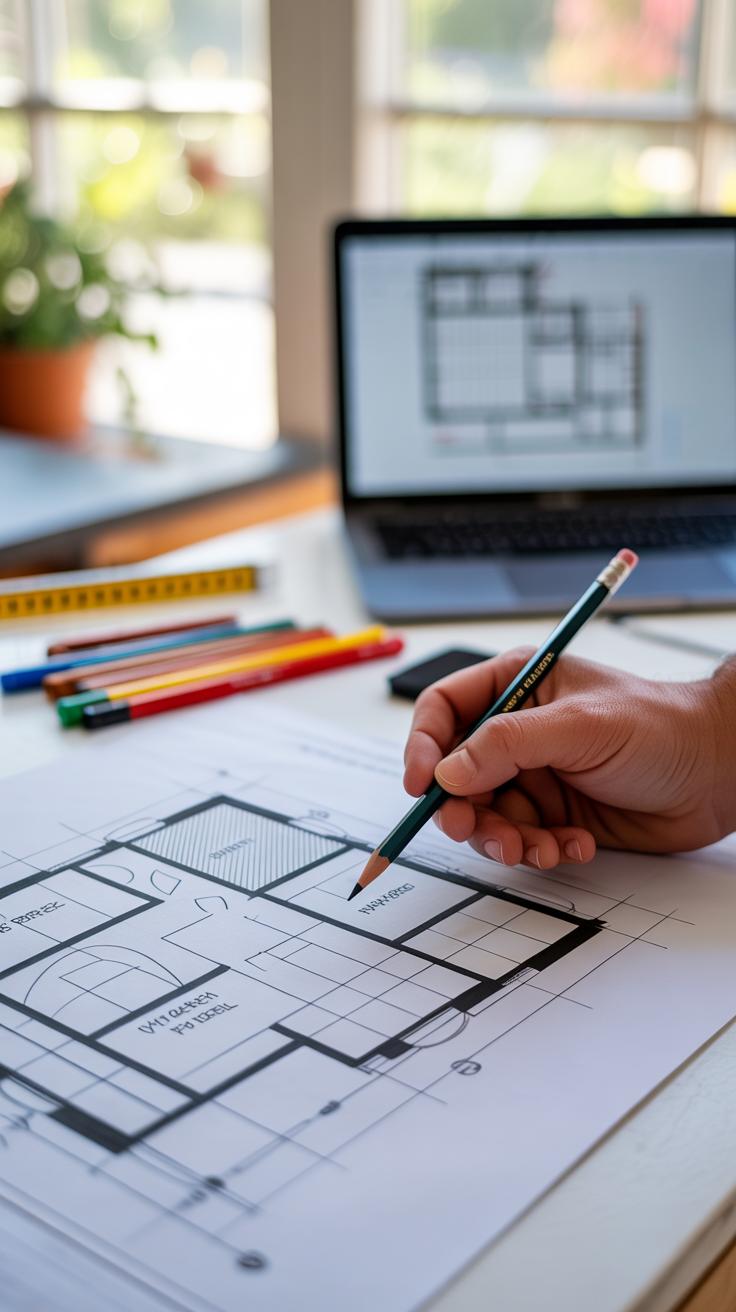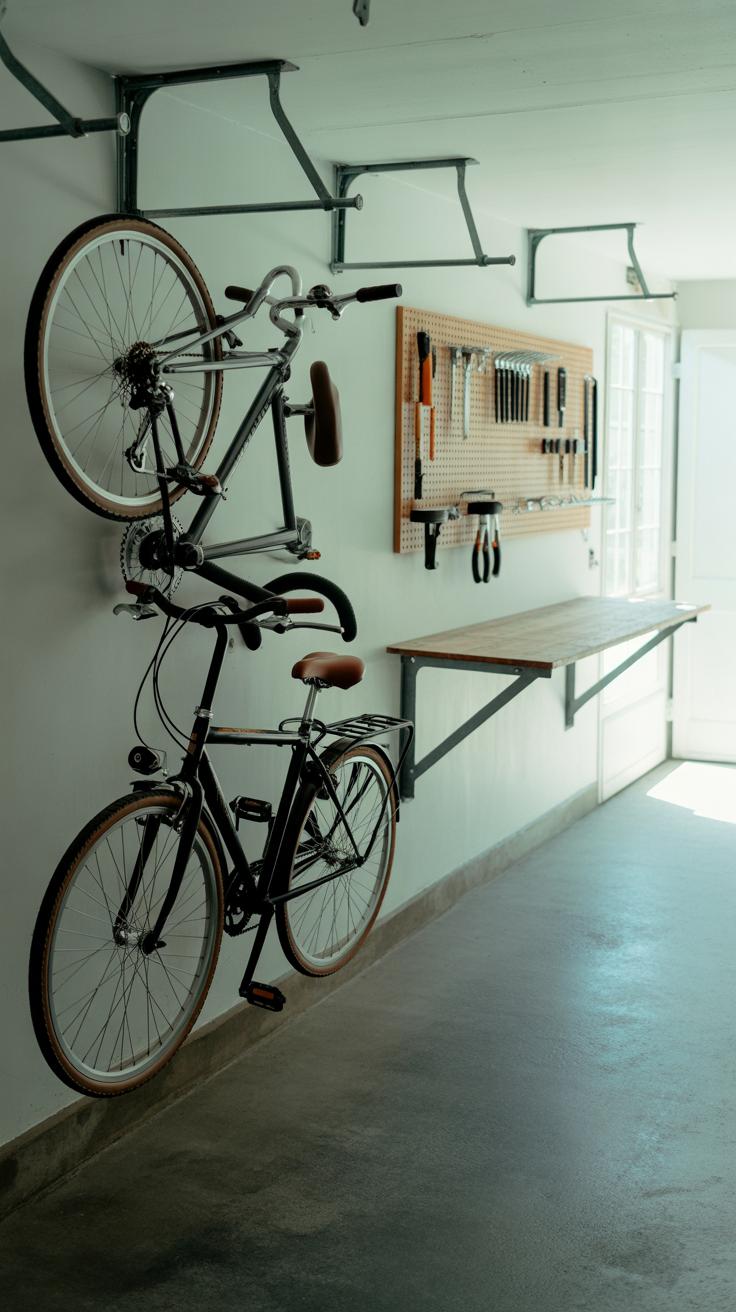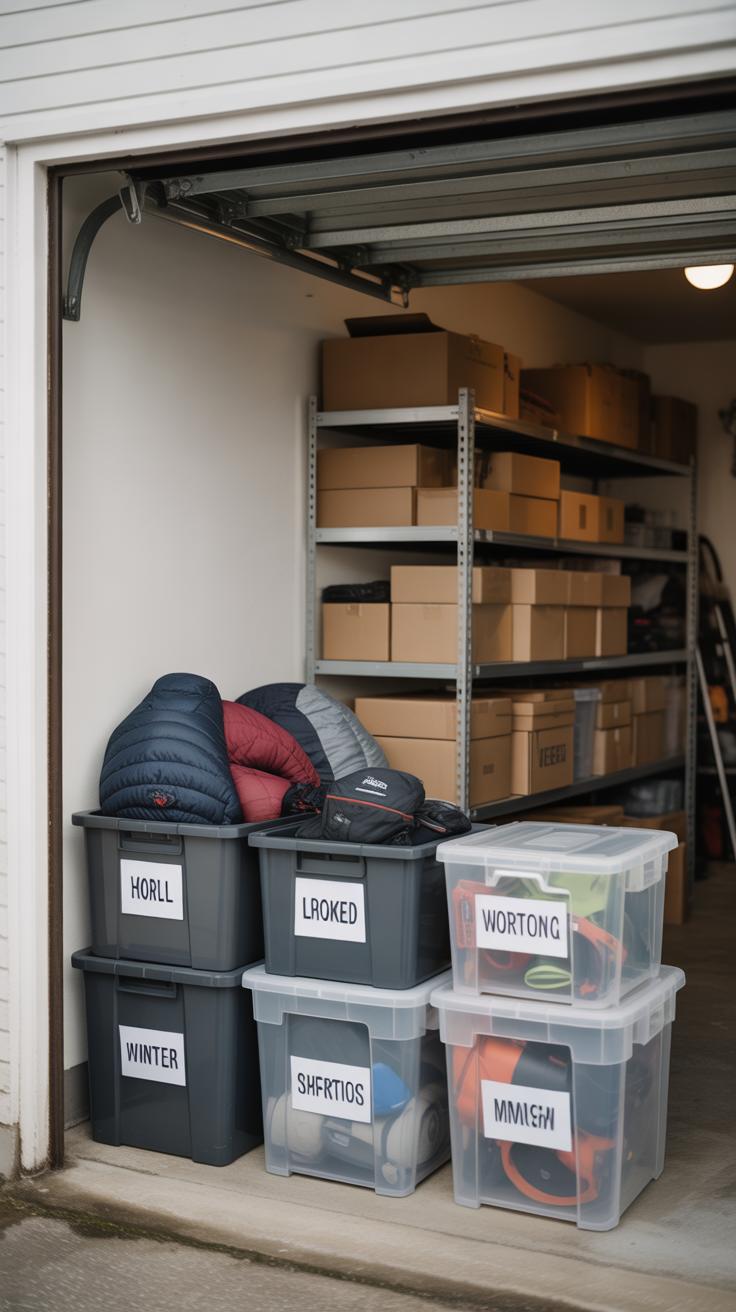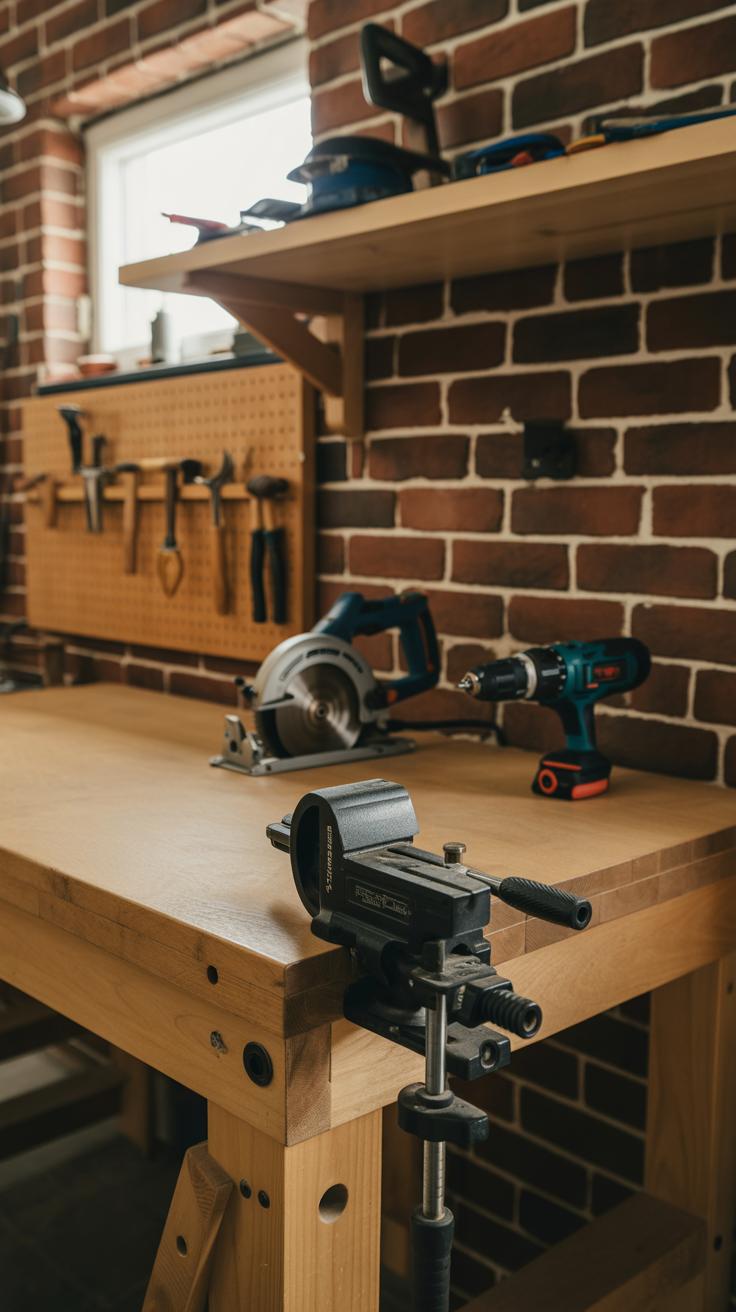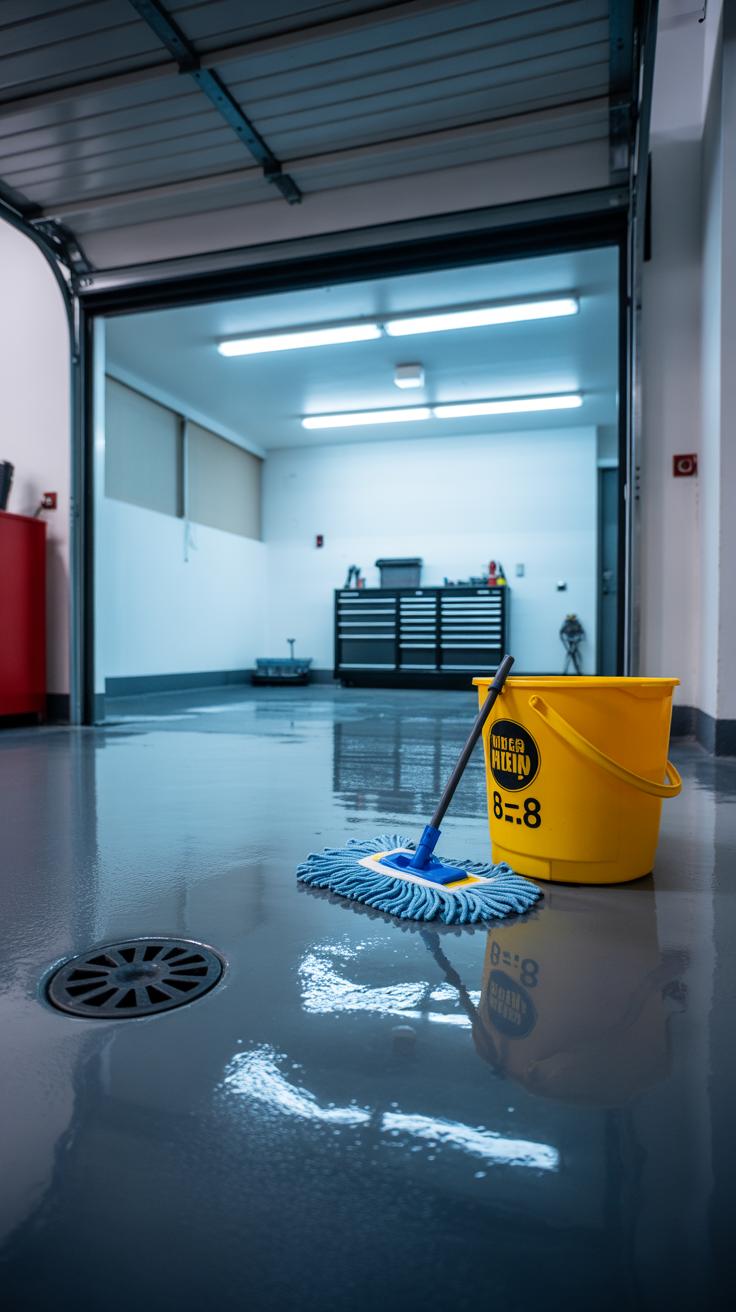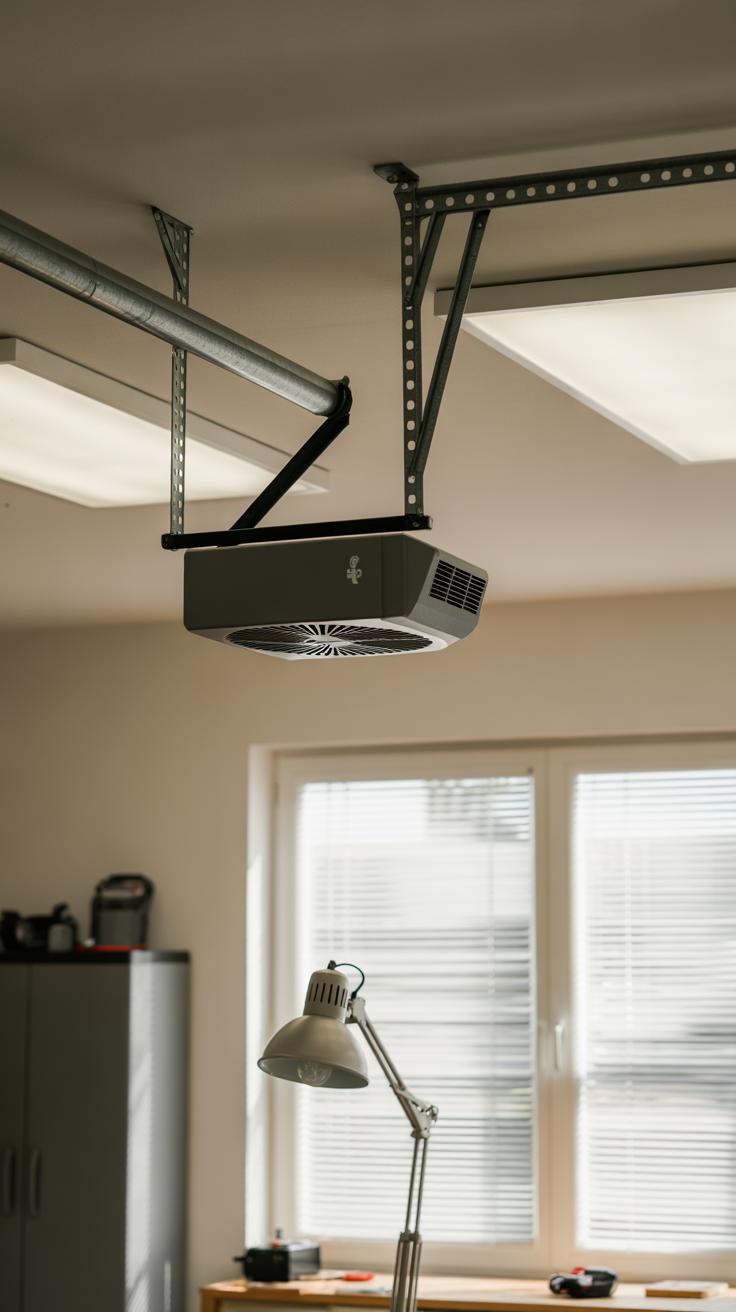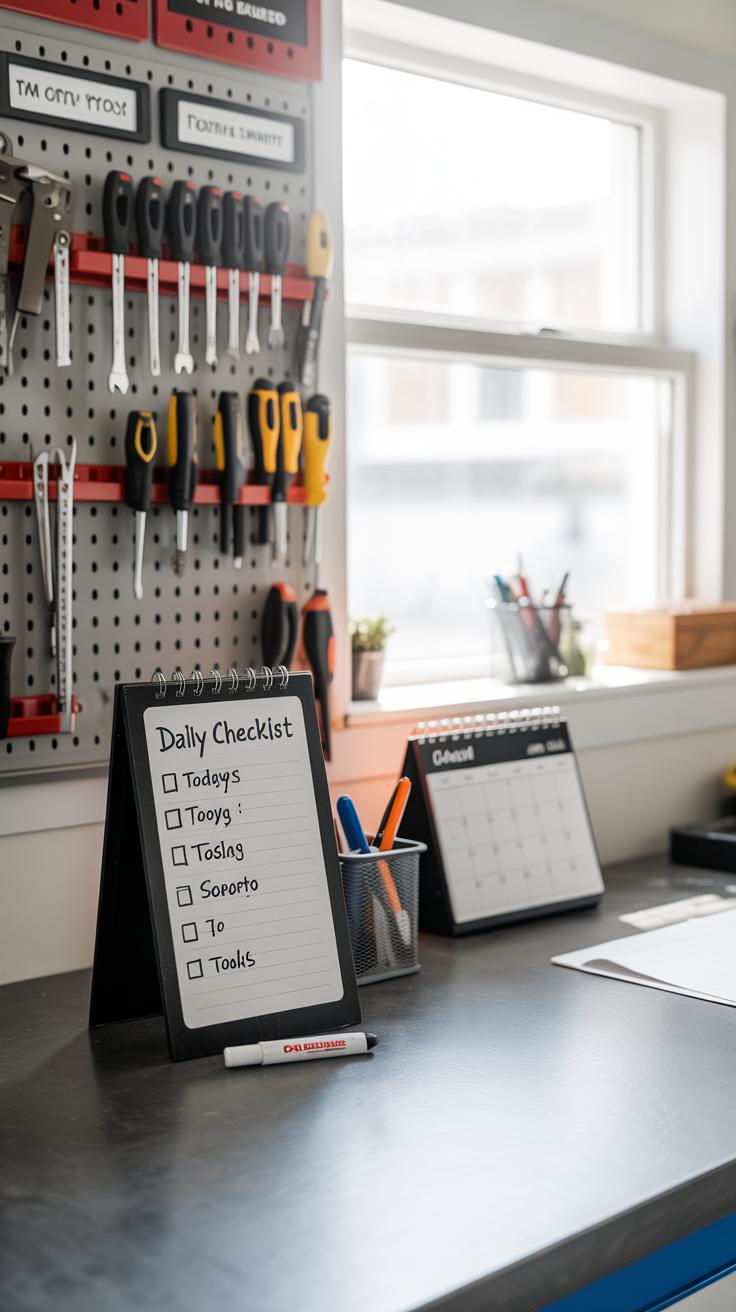Introduction
Your garage can quickly turn into a cluttered space if not managed well. Proven Garage Organization Tips For A Tidy Workshop will help you transform your garage into a clean and efficient area. By applying practical methods, you can make your garage more usable for your daily projects and storage needs.
In this article, you will find clear advice on storage ideas, cleaning routines, and smart arranging methods. These tips will help you save time, reduce stress, and keep your tools and items easy to find. Let’s explore ways to organize your garage step by step.
Plan Your Garage Layout
Before you dive into sorting every box or tool, take a step back and think about how your garage space really works. I always find that starting with a clear layout plan makes a huge difference. The first thing is to measure your garage thoroughly—don’t just guess or eyeball it. Grab a tape measure and jot down the length, width, and even the height if you can. Those numbers will guide everything else.
Once you have the measurements, sketch out a simple floor plan. Mark doors, windows, and power outlets carefully. These are the spots that affect what can go where, especially for workbenches or power tools. You might think you can just shove a cabinet against a wall, but if an outlet is blocked or a window won’t open, it can be annoying down the line.
Divide the space into zones based on your garage’s main activities. Maybe you want a workbench area, a tool zone, a spot for sports gear, and some general storage. Grouping related items keeps things neat. When you think about workflow, imagine moving naturally from one zone to another without doubling back or squeezing through clutter. This kind of thoughtful arrangement can make your workshop feel less like a cluttered cave and more like a practical space.
It’s funny how sometimes zones can overlap or shift as you start using the space. Don’t stress about getting it perfect at first—you can tweak your zones once you live with the setup for a while. Just start with this rough plan, it will save you time and frustration later.
Use Wall Space Wisely
Your garage floor can get cluttered fast, so freeing up space by using the walls is a smart move. Wall-mounted shelves can hold everything from paint cans to power tools, keeping them off the floor but still easy to reach. Pegboards are another handy option—they let you hang tools where you can see and grab them quickly, rather than digging through drawers. Hooks work well for bigger things like bikes or garden tools, which don’t stack well on shelves.
Install Pegboards For Tools
Pegboards let you arrange tools so they’re visible, which saves time when you’re working on projects. Try grouping similar tools together: screwdrivers in one area, hammers nearby, wrenches too. Put the tools you use most often at eye level or within arm’s reach, while keeping seasonal or rarely used gear higher up. It’s a bit like creating a workshop map you can follow without thinking too much.
Add Hooks And Shelves
Hooks are great for hanging bikes, hoses, or even ladders and garden equipment. Make sure to choose hooks rated for the weight they need to hold—you don’t want anything falling unexpectedly. Installing shelves for storage bins can keep small items boxed neatly and easy to find. When putting up these systems, use proper wall anchors or fasten directly into studs. It takes a bit more effort but makes the setup safer and longer-lasting.
Choose The Right Storage Containers
Picking the proper storage containers in your garage can make a huge difference. You want boxes, bins, or cabinets that fit what you’re actually storing, not just what looks neat on the shelf. For example, large plastic bins work well for bulky items like seasonal decorations, while smaller containers might be better for nails or screws. Stackable options save space, which is always a struggle in a garage.
Clear plastic bins deserve a mention because they let you see what’s inside without lifting lids or digging through piles. I’ve lost hours searching for a simple tool that was buried in an opaque box — clear containers fix that. It’s a small thing but saves a lot of frustration.
Labeling containers might seem obvious, but it’s often skipped. You don’t have to write novels on each label; just a few clear words will do. Labels help you find stuff quickly and keep things where they belong. Over time, they reinforce habits that keep your garage tidy without much effort, which is really the goal.
Organize Tools Efficiently
Keeping your tools neat and safe can be trickier than it sounds. Hand tools, power tools, and gardening gear tend to pile up quickly if you’re not careful. Tool chests offer a simple way to separate and protect your smaller items. You might prefer racks for bulkier things like drills or saws, making them easy to grab but off the floor. Drawer organizers help too, especially when you want a clear spot for tiny screws or bits. The key is having a place for everything—so things don’t just end up scattered around.
Group Tools By Type
Grouping tools by what they are—screwdrivers with screwdrivers, hammers with hammers—saves time. Imagine hunting for a wrench among a jumble of random stuff. It’s frustrating and slow. When tools are sorted, you get a quick visual of what you have and what’s missing. It feels a bit like setting a routine. Put it back where it belongs every time, and you’ll cut down on the clutter. Plus, it becomes easier to notice when something’s gone or worn out.
Create A Tool Maintenance Area
Ever noticed how tools degrade when left unclean or neglected? Setting up a small station in your garage for wiping, sharpening, or oiling tools keeps them working longer. It doesn’t need to be fancy—maybe just a sturdy table with some rags, oil, and a wire brush handy. You might find that regular maintenance also makes you think twice before tossing tools aside after use. It’s a simple habit, but one that pays off, keeping your workshop ready for the next job without surprises.
Create A Workbench Area
Setting up your workbench is more than just finding a flat surface. The layout should allow easy movement and access to your tools. Place the bench against a wall where you have room for pegboards or shelves above. This way, your tools can be within arm’s reach without cluttering the surface.
Good lighting is key. Natural light is great if you can have it, but at least install a bright overhead light or a flexible lamp. Oddly, a well-lit bench can make even mundane tasks less frustrating and might prevent mistakes.
Storage built into the bench makes a big difference. Drawers or cubbies help keep everyday tools tucked away but accessible. I’ve seen benches with shallow drawers for screws and drill bits, which really cut down on time spent hunting for small parts.
Keeping your workbench clear might sound obvious, but it’s surprisingly easy to let clutter accumulate. A clean surface not only reduces risks like accidental cuts or spills—though that’s important—but it also helps your mind focus. I find myself more engaged when there’s space to spread out materials instead of juggling around scraps or random tools.
Choosing the right workbench yet feels a bit personal. Some prefer a heavy-duty wooden bench for hammering and welding, others a metal frame with a laminated top that’s easier to clean. Look for something solid enough to bear your typical projects without wobbling, and if you want, go for models with built-in storage to keep essentials close by. You’re probably going to be there a lot, so comfort counts too—think about height and surface texture before buying.
Store Seasonal And Rarely Used Items
When it comes to items you use less often—like holiday decorations or bulky sports gear—finding the right storage spot makes a huge difference. You don’t want those things cluttering your main workspace or the floor where they get in the way. I’ve found that high shelves or attic storage are great places to keep these out of sight but still accessible enough when you actually need them.
Think about installing sturdy shelves up near the ceiling or using overhead storage racks. These spots handle large, lightweight items that can be awkward to store elsewhere. Using the vertical space often means you don’t have to keep digging through boxes on the floor.
Also, rotating your seasonal gear helps keep things manageable. As winter gear moves out, summer stuff should come forward—and vice versa. It stops random piles from building up and ensures you’re always ready for whatever season’s coming next. Do you find this simple rotation adds extra work? Maybe, but it’s worth it when your garage stays organized.
Maintain Cleanliness Regularly
Keeping your garage clean on a consistent basis can prevent the slow creep of dust, dirt, and clutter that sneaks in when you least expect it. It might seem like a hassle at first, but setting a simple routine makes a big difference over time. Maybe try dedicating a short time every week, or if that feels too much, once a month works too. The key is just not to let mess pile up.
Regular sweeping and dusting do more than just make things look nicer. They protect your tools from wear and rust and create a more pleasant space to work in. I’ve noticed that after a quick sweep, it’s easier to find things—and it makes the garage just feel less chaotic. Dust might seem harmless, but it does settle on every surface, including equipment, and that can slow you down or cause damage over months.
Getting rid of broken or unused items is a simple way to clear space. Picture this: the garage is full of random boxes or old gadgets you haven’t touched in years. Holding on to those things only makes clutter worse. Donating what’s still useful can give your garage a fresh breath of space. And tossing out the broken stuff? That’s just non-negotiable. I often find something I’m ready to throw away after a good clean—and surprise, I feel lighter afterward.
You might ask, how often should this all happen? Here’s a quick suggestion:
- Sweep floor and dust surfaces weekly or every two weeks.
- Sort through items and trash or donate monthly.
- Evaluate and adjust depending on how fast mess returns.
Will you stick to the schedule? Or find yourself skipping sometimes? Either way, a little effort goes a long way in keeping a garage both tidy and functional.
Improve Lighting And Ventilation
Good lighting changes how you use your garage. When your workspace is bright, you actually notice details—like a missing screw or a crooked shelf—that might slip past in dim light. It’s easier to focus, which makes projects less frustrating. Many people underestimate how much proper lighting improves comfort, especially in winter when natural light is scarce.
Add Bright LED Lighting
LED lights are popular for a reason. They offer clear, bright light without heating up the space. That means you can leave them on for hours without feeling like the garage is turning into an oven. Plus, they last a long time, so you don’t deal with frequent replacements. Setting up LED strips or overhead panels right above your workbench or storage areas makes it easier to find what you need quickly. I’ve found that switching to LEDs helped reduce mistakes during small repairs—I don’t think I’d go back to old bulbs now.
Ensure Proper Ventilation
Airflow might not seem like a big deal, but it really shapes the garage environment. Without fresh air moving through, the space often feels stuffy, and moisture can build up over time, leading to damp smells and even mold. Simple fixes like installing a window fan or leaving the garage door cracked open on dry days can make a world of difference. You might also try an exhaust vent or cross-ventilation—just some way to keep the air changing. It’s surprising how just a bit more airflow can make your garage feel less like a storage dungeon and more like a space you actually want to spend time in.
Establish Daily Habits For Organization
Keeping a garage orderly often comes down to a few simple habits you stick to every day. It’s tempting to leave tools or supplies out “just for a moment,” but those moments add up fast. Putting things back immediately after use breaks the cycle of clutter before it even begins. If you’ve ever spent several frustrating minutes hunting for a wrench or screwdriver right before starting a project, you’ll appreciate this habit.
Try to tidy up before wrapping up your work for the day. Even a quick sweep of the floor or a shelf rearrangement can save you hassle later. This doesn’t have to be perfect—just enough to keep chaos at bay. When you train yourself to handle small messes as they happen, the garage stays manageable without huge cleanups.
Put Items Back After Use
One habit that really changes how your garage feels is returning tools and materials to their designated spots immediately. Sure, some days this feels like extra work when you just want to close the door and be done, but it’s worth it. It cuts down on clutter piling up and means you spend less time searching for what you need next time. I’ve noticed that once I got serious about this, projects went smoother, and frustration dropped.
Think about your own garage. How often do items get left on benches or the floor? Just imagine cutting that in half. You don’t have to be perfect. Just consistent. Place tools where they belong right away and it quickly becomes second nature.
Set A Weekly Tidy Time
Sometime during the week, blocking out just 20 to 30 minutes to tidy up can make a big difference. Pick a day that fits your schedule—maybe Saturday morning or a weekday evening. Use this time to reorder shelves, sweep the floor, or double-check that everything’s back in its place. It’s surprising how much just a little effort each week keeps disorder from sneaking back in.
This doesn’t have to feel like a chore either. Consider putting on some music or a podcast while you tidy. Over time, that weekly routine keeps your garage usable and leaves you less overwhelmed when bigger cleanups come along. Plus, it feels good to finish the week with a clear workspace, doesn’t it?
Conclusions
Keeping your garage organized is a continuous effort but the benefits are clear. Your workspace becomes safer, more functional, and pleasant to use when everything has a proper place. Regularly sorting and cleaning your garage prevents clutter build-up and helps maintain order.
Try the suggested tips and create a maintenance routine that fits your lifestyle. Focus on smart storage, labeling, and daily habits to enjoy a tidy workshop that supports your projects. Your organized garage will be a source of pride and efficiency for years to come.


